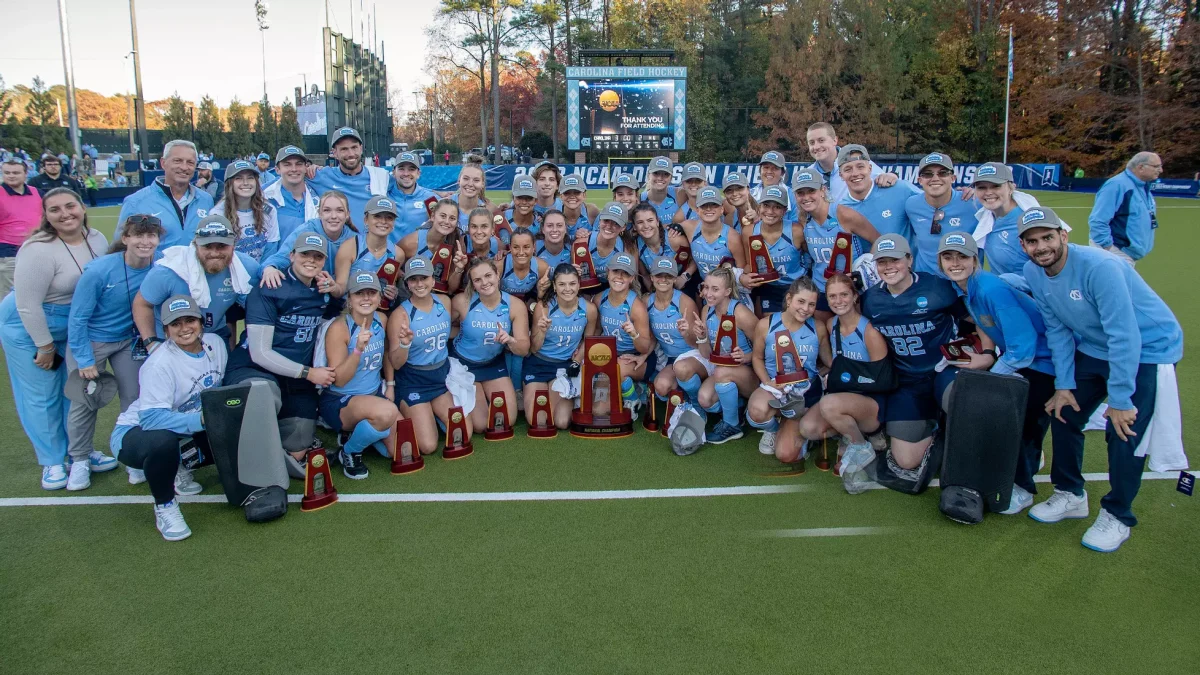GDTBATH: Tsini McCoy
The first-year student from Cherokee is proud of her Native heritage and hopes to connect her career with it.

Ask Tsini McCoy about the stickers on her water bottle and she answers the way she does when leading tours at the Museum of the Cherokee People in her hometown.
She starts with the most prominent decoration on her bottle, the water spider, a central figure in the Cherokee story about the creation of fire.
According to the tale, a small but clever spider succeeds at capturing fire for warmth and light, a task many other animals had failed to do. It’s an allegory that teaches lessons about looks being deceiving and how people have unique gifts and roles to play, McCoy explains.
“It speaks a lot to our culture of who we are and what we believe in,” says McCoy, a first-year student from Cherokee, a 4.5-hour drive from Chapel Hill. The town in southwestern North Carolina serves as the capital of the Eastern Band of Cherokee Indians.
Near the end of her first semester of college, McCoy calls being away from Cherokee and her Native community for the first extended time “a big adjustment.”
But it’s also reaffirmed her decision to come to Carolina, the university that attracted her with its welcoming and inclusive environment and strong STEM programs. Majoring in biology and minoring in Native American and indigenous studies, McCoy began college planning to explore connections between Native medicine and plant biology and chemistry.
She’s still interested in biology but is considering other potential career paths such as journalism and reporting on topics impacting Native communities like her own.
“I know no matter what happens, I want my future career to deal with being Native American,” says McCoy. “I want to come back and serve my community.”
That desire came with age and increased community involvement. As a younger child, McCoy grew up in the Cherokee culture and learned about traditions but “had a bit of a struggle” with her identity because of her biracial background. (Her father is Cherokee, and her mother is part white and part Puerto Rican.)
“I felt like I kind of had to choose, and I didn’t really know where I was in that,” she says.
Those feelings subsided as she grew older and became more involved with tribal pageants. McCoy was Teen Miss Cherokee from 2021 to 2022, a process and title that caused her to feel “a passion and identity that I never really felt as a kid.”
Around the same time, she began working as a cultural specialist at the Museum of the Cherokee People. The role involved both honing her knowledge of the Cherokee heritage and sharing that information with a broader audience.
McCoy learned through trial and error. She observed more experienced colleagues and paid attention to which questions people asked the most. When possible, she tried to connect information with stories from her own life.
“One thing I really loved about that job was I able to share personal experiences, pieces of my story, with people who were curious or had questions,” McCoy says.
While the context has changed and is less formal, McCoy still encounters curiosity and questions about her Native heritage at Carolina from classmates and friends. She’s glad to talk about it.
To know McCoy is to know her heritage.
“My nativeness is a big part of who I am,” she says. “It’s a big part of my beliefs and values and how I hold myself as a person. They’re always so interested in it, which makes me feel important and seen.”







